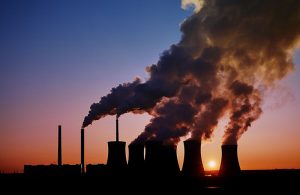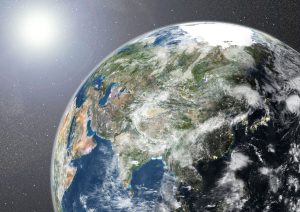
The Lebanese Crisis: The Deterioration of the Lebanese Pound
Contributors: Haidar Noureddine, Christy BouMansour, Haya Mouakeh, Jennifer Sabra, Hanine Charanek, Mohamad Kanj
The Downfall of the Lebanese Lira
Abu Ali, a farmer living in Beqaa valley in Lebanon was facing problems with his apples crops after he was forced to cut the pesticides used because of the price increase after the Lebanese crisis.
He wasn’t sure how to protect his crops after he put a lot of effort during the year and now he is worried because he doesn’t have any source of income anymore.
Ibrahim Tarshishy, who is also a farmer in Beqaa valley, was not able to sell all his apple crops where half of them got moldy. “To be honest, I don’t expect the days ahead to be good. I see before us more depression, sadness and poverty”, said Ibrahim Tarshishy, a farmer in Riyak region, Lebanon”
Like these two cases, lot of farmers were facing like these problems, and no one was able to help them, and as we reach the conclusion of 2022, Lebanon’s financial woes are rapidly approaching the critical stage, and the Lira exchange rate is reaching a breaking record.
The Lebanese Lira exchange rate decreased because the supply for dollar was not enough to match the demand, and the central bank did not have enough reserves to interfere and match it with the demand. The demand for dollars was mainly driven by the aim to complete imports transactions. Since 2002, the net trade balance was negative, and the deficit was growing, reaching very high levels to around $14 Billion in 2014. This means that imports were higher than exports, and so the dollars outflow was bigger than the inflow.
To maintain the exchange rate fixed, as it was the case earlier, Lebanon used to depend on two main sources for dollars inflow, net transfers sources, and financial account source. First, Lebanon used to depend on transfers which includes grants, loans, and personal remittances. The graph below shows that net transfers were bringing a significant amount of dollars. However, this source is very unstable. It is very fluctuating, and it depends highly on uncontrolled factors like the help from other countries that we can not control as shown in the graph.
The financial account consists mainly of Eurobonds, and investments in companies, and currency & deposits coming from abroad into the Lebanese banks. As shown, this account was a huge source for dollar inflow. However, again, it is very unstable, and very fluctuating. There are almost no two similar points that are equal. Further, it depends highly on uncontrolled factors. For example, after Iraq invasion, so many Iraqis transferred their money into the Lebanese banks, and so the dollar inflow increased, but this happened because an event that we do not have control over it.
These two accounts together were balancing the dollar demand needed from the imports. In cases of mismatch between dollar supply and demand, the central bank used to interfere by buying or selling dollars in the market to keep the exchange rate fixed. However, in 2018, we had the second largest BOP deficit as shown below, which means the second largest dollar shortage, but the central bank did not have enough reserves which caused the current crisis.
In summary, the crisis started mainly in 2018. However, the root reason behind it is not the absence of reserves, but that Lebanon was depending mainly on unstable sources of inflow for foreign currencies, which was very risky, and unstable to maintain because of the fluctuations.
Solution
To further enrich Lebanon’s economy, we introduce our project that aims on focusing on sustainable economic development that relies on an integrated export system, naturally creating tons of job opportunities by enhancing Lebanon’s agricultural sector due to the presence of fertile land, abundant water resources, good weather conditions .
The project will control the process from harvesting to exporting, and starting with enforcing regulations that benefit the farmers instead of making it harder for them to export their goods, implementing technical guides that monitors farmers’ techniques into adopting good agricultural transactions, as well as adopting training workshops administered agricultural engineers also supplying them with the latest and greatest equipment that regulate water usage while limiting their use of unsustainable substances, such as harmful pesticides, and providing alternatives that are viable.
Saudi Arabia
Now, since Saudi Arabia is infamous for its totally dry lands and a central region that is characterized by extremely hot and dry summers, it harbors a very limited agricultural sector and thus heavily relies on importing olive oil as well as basic produce. We should make use of the current improving relationship between Saudi Arabia and Lebanon and prioritize exportation to this country due to the low and reasonable shipping fees.
1-Olive oil
The olive oil market in Saudi Arabia needs a lot of importation as a change in dietary habits throughout the entire country has spurred the consumption of it. Saudi Arabia started importing about 30,000 tons annually while only producing 20% of its own olive oil, but that’s slowly changing as it’s heading towards an independent olive oil market realm that’ll eventually decrease the exports. We won’t focus on increasing the imports from Lebanon but on decreasing the shipping and customs fees that were introduced in June of 2020.
2-Apples
As we mentioned above, a huge change in dietary habits and healthy eating have welcomed Saudi lifestyles, thus making produce, especially apples, way higher in demand. Lebanon exports apples to Saudi Arabia in relatively low quantities as opposed to other countries because of strict pesticide regulations. To increase the exports, we should introduce strict laws that modulate their usage.
3-Avocados
Lebanon’s avocado exports were totally banned in Saudi Arabia because of drug smuggling fiascos, which led the Saudi government to enforce harsh consequences that will only be salvageable by an examining process that helps avoid any trials of smuggling drugs.
Cyprus
Cyprus makes a great exporter as well, as it only holds 14.52% of agricultural land that is extremely affected by small temperature inconsistencies. Our focus on Cyprus is mainly due to the distance from Lebanon, which is only 26 kilometers, making it extremely easy for shipments to move within those countries.
1-Olive oil
The olive oil market in Cyprus is in a desperately high demand since the consumption of olive oil is three times greater than what the country produces. Because of this, we should encourage exports from Lebanon in a way that competes with both Germany and Spain, since they’re offering their olive oil at similar and lower prices.
2-Apples
Considering Cyprus is one of the most countries with apple shortage, it exports most of its apple supply excluding Lebanon from its exportations because of a heavily regulated pesticide system, solving that issue requires us introducing strict pesticide laws, after that we can start exporting to Cyprus at the same rate and price that we export to Turkey.
3-Avocados
Because of the free trade agreement between European countries, Lebanon is unable to compete equally with European countries at exporting avocados, yet we are able to compete with Egypt, which offers a lower price. To solve this, we can try and export at a lower price than Egypt.



